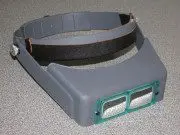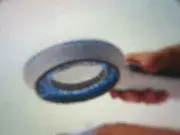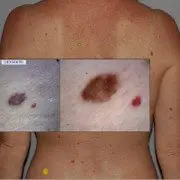If you find a suspicious mole or are just unsure about a place on your body, go see your doctor. This could save your life!
Your doctor is trained to identify suspicious moles or spots as potentially melanoma. On your visit, prepare for some or all of the following:
- Answer questions like someone else in your family has or had skin Cancer including melanoma; if you find it difficult to get a tan; if you work outdoors; if you stayed a lot in the sun when you were young; if you have had severe sunburn; And, if you have noticed changes in your mole in the last few weeks.
- Take off most of your clothes, so that your doctor can carry out a complete control of the skin. You can wear a dressing gown for modesty.
- Your doctor can use a magnifying glass with a light source or a special hand tool called a dermatoscope to take a close look at your moles and spots.
- Your doctor can take measurements and pictures of suspicious moles so they can be used later for comparison or to refer an expert for advice.
- Your doctor can check if your lymph nodes They are enlarged.These are found under the skin of the armpits, around the neck and in the groin area.
| Good light, magnification, and photography help identify melanoma. | |||
|---|---|---|---|
 |
 |
 |
 |
Polka dot mapping
For most people, all it takes to get the first skin cancer and melanoma check-ups is to do self-evaluations every 1 to 3 months.
However, a screening program can be helpful for people at high risk for melanoma. The term "topo mapping" has been used in several different ways, but generally refers to a monitoring program where:
- High-quality photographs of the skin surface of the entire body have been taken with a digital camera.
- The images are evaluated by a skin cancer expert, usually a dermatologist
- A report is provided to you or your referring physician that includes suspicious diagnoses and treatment recommendations.
- Your images and reports are safely stored in a database for future comparisons
- Copies of the images can be provided to assist you with skin check-ups.
The mole mapping process is sometimes called teledermatoscopy or digital dermoscopic surveillance. It is more suitable for people with many moles, especially if they have atypical moles
The result of your first topo map will determine when you have the next one. A follow-up visit may take 3 to 6 months to photograph a mole that is borderline to ensure it is stable.
Otherwise, you can have a follow-up topographic map every one to two years or at the time recommended by your doctor.
A less technical mole mapping procedure is for your doctor to simply mark the spots on a body drawing to indicate the position of the moles and the spots that may be of concern. Your doctor may examine your moles with a dermatoscope and take pictures for future reference.
| Taking body shots | A mole that has been mapped | Blows to the body | Report for patient and doctor. |
|---|---|---|---|
 |
 |
 |
 |
* Images provided by MoleMap NZ
If I have a suspicious spot on my skin, what happens next?
If you suspect that you have skin cancer, including melanoma, your doctor may arrange to have it removed surgically at your usual medical facility.
If your doctor is unsure of the diagnosis, or if your suspected mole needs expert attention, you may be referred to a specialist. Skin cancer specialists include dermatologists, plastic surgeons, and other highly trained doctors.

